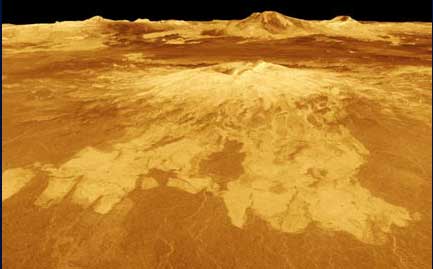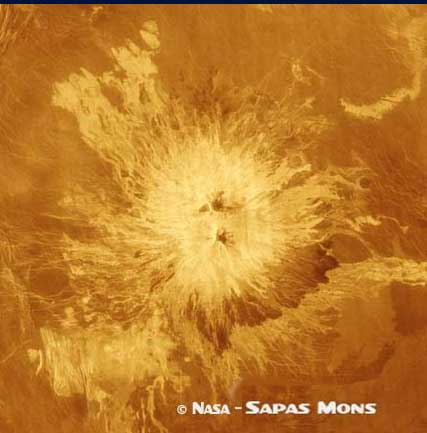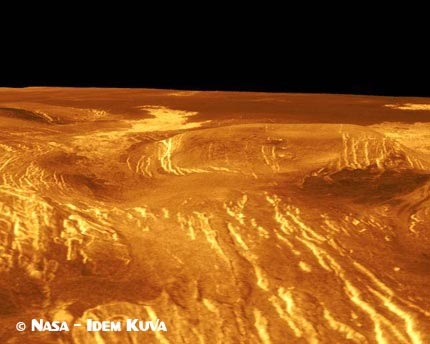|
|
Venus2004.org
> Files
3°) A few landmark volcanoes
As do the Earth and Mars, Venus also boasts a few “star” volcanoes. Giant shields like Sapas Mons and Sif Mons have diameters on the order of 500 km and are comparable in area to Olympus Mons on Mars. Their elevation, on the other hand, is much more modest. Whereas Olympus Mons reaches 22 000 m in height, the shields of Venus only rise to 3000 m. Maat Mons is the exception: the tallest volcano of Venus reaches a record 8000 m.  Modest elevations are best explained by the fact that magma chambers under these volcanoes are close to the surface: the hydrostatic head is insufficient to enable magma to reach great heights. Moreover, lava on Venus is very fluid and runs over long distances, making it difficult for mounds to pile up. Based on elemental analyses by Soviet probes onthe ground, lava on Venus appears to be predominantly basalt.  Sapas Mons is one of the most spectacular volcanoes on Venus with overlapping fields of lava, and a complex summit with two craters. Other volcanoes are split apart by major rift zones and display rows of parasitic cones, including pancake domes. These circular domes, 20 to 50 km in diameter, might be made of gas-rich magma that is unable to burst into shreds under the high pressure of the Venus environment and spreads instead in a viscous fashion.  With so many different landscapes, Venus would be a magnificent destination for astronauts, except that the infernal conditions at the surface (475 °C temperature, 90 bars of pressure) forbid such a manned expedition to take place in the near feature. In the meantime, radar imagery provides us with a virtual tour of this most original planet. |
|
© 2003-2006 Futura-Sciences.com. All rights reserved.
Indexator - Comparateur de prix - Revue de Presse
